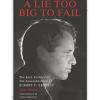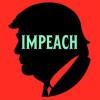JFK: Covered and Smothered
What the Warren Report Got Wrong
"If we could run the Zapruder film in reverse, patch up the president’s gruesome head wound, send the bullets flying back to the chambers whence they came, return the assassins to their sinister underworld and back up the Lincoln convertible so that Jack and Jackie are once again waving to the crowds in the Texas sunshine, then we could also walk backwards through the last 30 years, becoming younger and more hopeful, forgetting tragedies one after the other, arriving finally at a point of innocent stasis where we can stand forever watching the American sunrise with immortal delight. But we can’t."—Andrew O’Hehir, “JFK: Tragedy Into Farce,” San Francisco Weekly (Dec. 18, 1991), reprinted in Oliver Stone and Zachary Sklar, JFK: The Book of the Film, p. 271 (1992).
Undeniably, we can’t turn the clock back to Nov. 22, 1963 and prevent President John F. Kennedy from being murdered. We can, however, 49 years after that stunning, shocking and shattering event—a U.S. president shot to death in broad daylight while motorcading in an open limousine through downtown Dealey Plaza in Dallas, TX—take a fresh look at JFK’s murder and see some of the respects in which the Warren Commission—which conducted the official investigation of the assassination—failed the American people. A new look at the JFK assassination based on information and evidence unavailable to or ignored, denied, discounted or not pursued by the Warren Commission permits us to see many things the Commission got wrong, especially in regard to its determination that Lee Harvey Oswald was the sole assassin.
New Perspectives
The JFK assassination is an exception to the usual rule that the further we get from an historical event the less we know about it. Because the Warren Commission’s 1963-1964 investigation was rushed and inadequate, because the 1964 Warren Report, the result of that investigation, was not only flawed but in important respects simply not credible and because of new information that has come to light since 1964, we now know more about the assassination, and about the original investigation of the assassination, than ever before.
Let us begin by reexamining the four basic conclusions of the Warren Report.
These were: (1) the shots which killed President Kennedy and wounded Texas Gov. John Connally (who was sitting in front of JFK in the presidential limousine) were fired from the sixth floor of the Texas School Book Depository (which overlooked Dealey Plaza and was behind the presidential limousine at the time of the assassination); (2) three shots were fired; (3) the shots which killed JFK and wounded Connally were fired by Lee Harvey Oswald; and (4) there was no evidence that Oswald was part of any conspiracy, foreign or domestic.
Nearly a half-century after the assassination, all four findings are questionable.
■ The weight of the evidence is that, although shots may indeed have been fired from the sixth floor, additional shots were probably fired from other places, including the area to the right front of the limousine (location of the so-called grassy knoll).
■ The weight of the evidence also is that at least four shots were fired.
■ As for Oswald being the sole shooter, it is uncertain whether Oswald was even on the sixth floor at the time of the assassination; if Oswald was there, it has not been shown that he fired any shots; and it now appears quite unlikely that Oswald, who was not an expert shot, was capable, as the Warren Report claimed, of firing shots with the extraordinary speed and deadly accuracy required to carry out the assassination singlehandedly using the weapon the Warren Commission alleged he used. The Warren Report maintained—preposterously, we can now see—that Oswald, using an old, cheap, worn, flimsy second-hand Italian bolt-action 6.5mm (.268 cal.) carbine that fired ammunition not manufactured since 1944, shot the seated JFK in the back of the head at a distance of 88 yards (265 feet) while the presidential limousine was moving at an angle, downhill, and away from the sixth floor window.
■ Finally, we now know that the finding of an absence of evidence of conspiracy was hardly dispositive of the issue of a possible conspiracy behind the assassination. The Warren Commission found no evidence of conspiracy because, as congressional committees that reinvestigated the assassination have confirmed, the Commission’s investigation was narrowly focused and not designed to reveal any foreign or domestic conspiracy.
More Warren Blunders
Here are some of the other things the Warren Commission got wrong:
■ In finding that Lee Harvey Oswald was a lone assassin, the Warren Report placed great reliance on Oswald’s “historic diary” which the Warren Commission thought Oswald had written over a period of more than two years as an account of his sojourn in the Soviet Union. It is now established, however, that although the diary is in Oswald’s handwriting, it was written within a short period of time—either all at one time or during a few consecutive writing sessions. Whatever it was, therefore, the diary was not what it claimed to be or what the Warren Report assumed it was.
■ Contrary to what the Warren Report claimed, Lee Harvey Oswald was not a leftist or a Communist or a Marxist. His so-called connections to far-left causes and organizations were marginal, temporary, or suspect. His endeavor to make himself look like a radical left-winger was (to borrow a term used by the intelligence community) classic “sheepdipping”—manipulated behavior intended to create a desired image. For example, the New Orleans chapter of the pro-Communist Fair Play for Cuba Committee which Oswald founded was a shell organization with Oswald as its only member.
■ On the other hand, the Warren Commission refused to acknowledge the now-established fact that Oswald had close connections with and moved in the circles of people on the far-right. In Dallas, for example, he was close friends with the wealthy, aristocratic and mysterious George DeMohrenschildt, a member of the Russian émigré community in Dallas who had been arrested by the FBI during WW2 for spying for the Axis. In New Orleans in the summer of 1963 Oswald was in the company of two right-wing extremists, David Ferrie (who once made an intemperate public speech about President Kennedy so vitriolic that he was forced to stop mid-speech) and Guy Banister (a militant racist and segregationist).
■ The Warren Report failed to acknowledge it, but Oswald had frequent, sometimes close, interactions with persons who definitely or almost certainly were agents or assets of law enforcement or the U.S. intelligence community. George DeMohrenschildt, whose cover was “petroleum geologist,” had spook written all over him. He appears to have been the CIA’s “babysitter” of Oswald—that is, he probably was assigned by the agency to keep watch on Oswald. David Ferrie—described by someone who knew him as “a dangerous individual capable of almost anything”—did contract work for the CIA (and was also associated with organized crime). Guy Banister, a former FBI agent and founder of the so-called Anti-Communist League of the Caribbean, kept extensive intelligence files on leftist individuals and organizations.
■ Contrary to the Warren Report, which found that Oswald was not an operative of any American law enforcement or intelligence agency, there are good reasons for believing that Oswald was in fact an FBI informant, and it seems very likely that he also was an asset of the CIA or some other American intelligence agency (such as the Office of Naval Intelligence).
■ Because of his numerous interactions with and connections to right-wing extremists, intelligence operatives and law enforcement agents, Lee Harvey Oswald was not, as the Warren Report claimed, a loner.
■ We now know, incredibly, that neither the Warren Commission, the FBI, or the Secret Service ever requested or examined Oswald’s military intelligence file. (Oswald was a U.S. Marine from 1956 to 1959 and while in the military was for a time a radar operator on a U.S. military base in Japan from which the CIA’s U-2 high-altitude spy planes would depart to conduct photographic surveillance of the Soviet Union.) We also now know that in 1973 Oswald’s military intelligence file was secretly and suspiciously destroyed as part of “routine” housecleaning operation.
Bamboozled by the CIA
■ We now know that when the Warren Commission issued its report it had been bamboozled by the CIA. We now know that when asked to provide assistance, the CIA (in the words of Jefferson Morley, a journalist and expert on the CIA) “responded airily and inaccurately to inquiries from the Warren Commission.” (We also know that the CIA still refuses to release thousands of pages of documents relating to the JFK assassination, and that it would be naive to think that the CIA has not destroyed assassination documents it deemed incriminating or embarrassing.)
■ Considering that he was supposed to be a radical leftist activist who hated America, Oswald was treated with strange leniency by the CIA and the FBI prior to the assassination, a plain fact the Warren Report whitewashed.
Although he supposedly defected to the Soviet Union in 1959, tried to renounce his U.S. citizenship and announced he would give the Soviets classified information he had acquired while serving in the Marine Corps, the CIA (according to the Warren Report) exhibited no interest in him when he returned to the United States and never interviewed him and did not open a file on him.
And even though it knew about Oswald’s defection, his public posturing in favor of Fidel Castro’s Communist Cuba and his alleged visits to the Soviet and Cuban embassies in Mexico City in October 1963, the FBI not only failed to charge him with any crime but omitted to put him on the Security Index, its list of persons deemed dangerous to the national security. Nor did Dallas FBI agents, who prior to the assassination knew where he worked, inform the Secret Service that Oswald was employed at the School Book Depository, in front of which the presidential motorcade was scheduled to pass. (This was one of the reasons why, less than three weeks after the assassination, 17 FBI officials—five field investigative agents, one field supervisor, three special agents in charge, four headquarters supervisors, two headquarters section chiefs, one inspector and one assistant director—were secretly censured or placed on probation by J. Edgar Hoover for “shortcomings in connection with the investigation of Oswald prior to the assassination.”)
■ Unknown to the Warren Commission, in the weeks and months before the assassination the Secret Service became aware of plots in Chicago, Tampa and Miami to shoot JFK from a building as he was motorcading. (Oswald, so far as we know, was not aware of or involved in these assassination schemes.) We also now know that the protection the Secret Service furnished President Kennedy on Nov. 22, 1963 was suspiciously inadequate.
■ The Warren Report refused to acknowledge what we can now be sure of: President Kennedy would not have been assassinated if the Secret Service and the FBI had done their job. This was an avoidable assassination.
Judged by History
Space limitations prevent this article from delving into what many books and articles have done so well: examining the numerous other ways in which the Warren Commission let the American people down. We are now in a position to realize that the governmental agency tasked with thoroughly and accurately investigating and reporting on the murder of an American president failed abysmally.
As other assassination articles have pointed out, most recent books on the JFK assassination written by academic historians who teach in universities reject the no-conspiracy, Oswald-was-the-sole-assassin theory adopted by the Warren Commission. With a few exceptions, these books subject the Warren Report to a harsh but just judgment.
The verdict pronounced by history professor Gerald D. McKnight in one of these books, Breach of Trust: How the Warren Commission Failed the Nation and Why (2005), will stand as the verdict of history: “[T]he Warren Commission went through the motions of an investigation that was little more than an improvised exercise in public relations. The government did not want to delve into the heart of darkness of the Kennedy assassination because it feared what it might uncover… [T]he Warren Report was a shoddily improvised political exercise in public relations and not a good-faith investigation into the Kennedy assassination.”
In short, key aspects of the Warren Report verge on the cartoonish. We didn’t know that in 1964.
Donald E. Wilkes, Jr. is Professor Emeritus in the UGA School of Law. This is his 32nd JFK assassination article.












comments